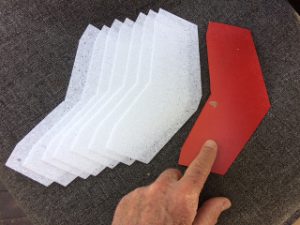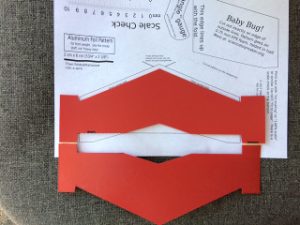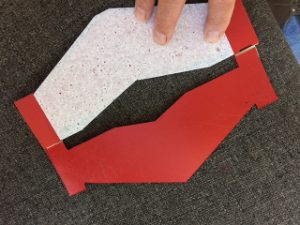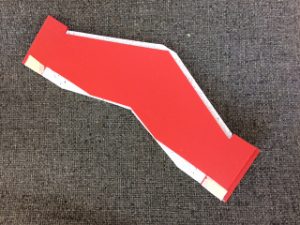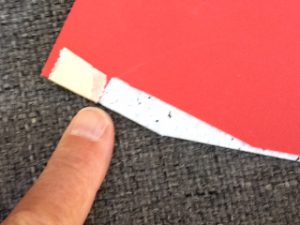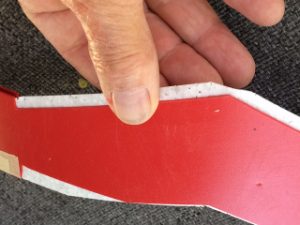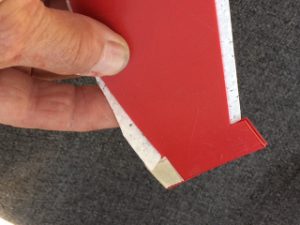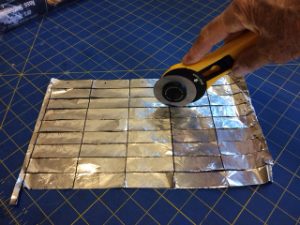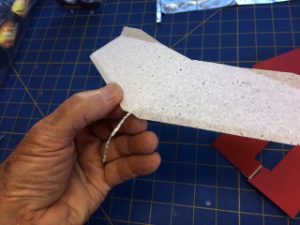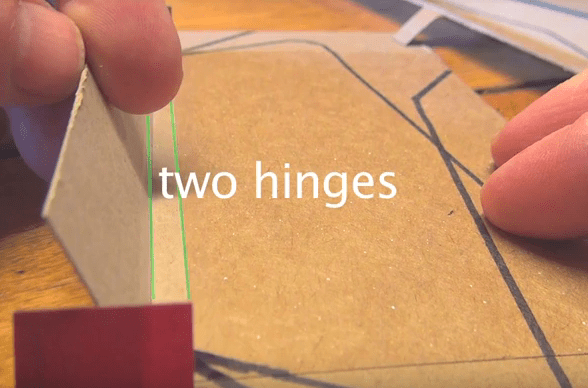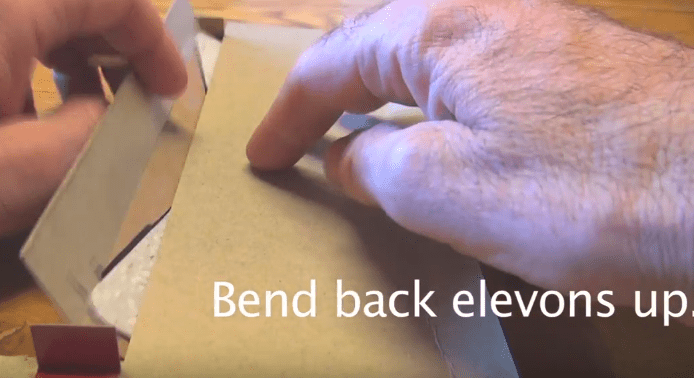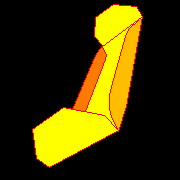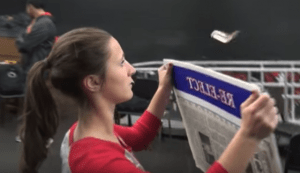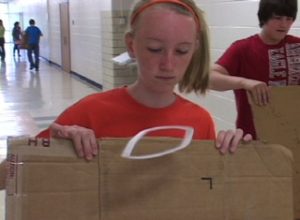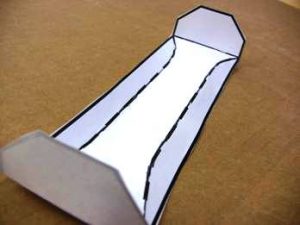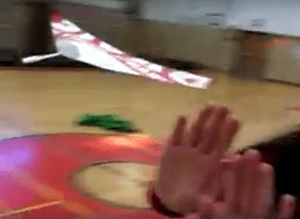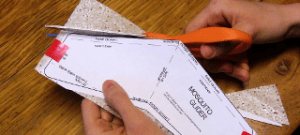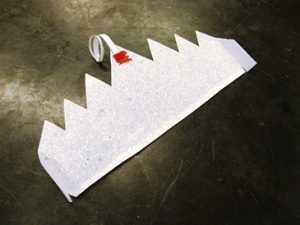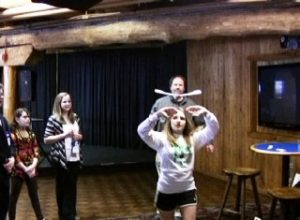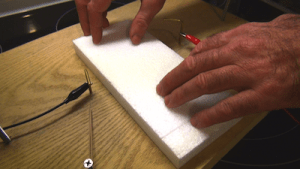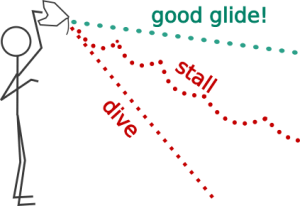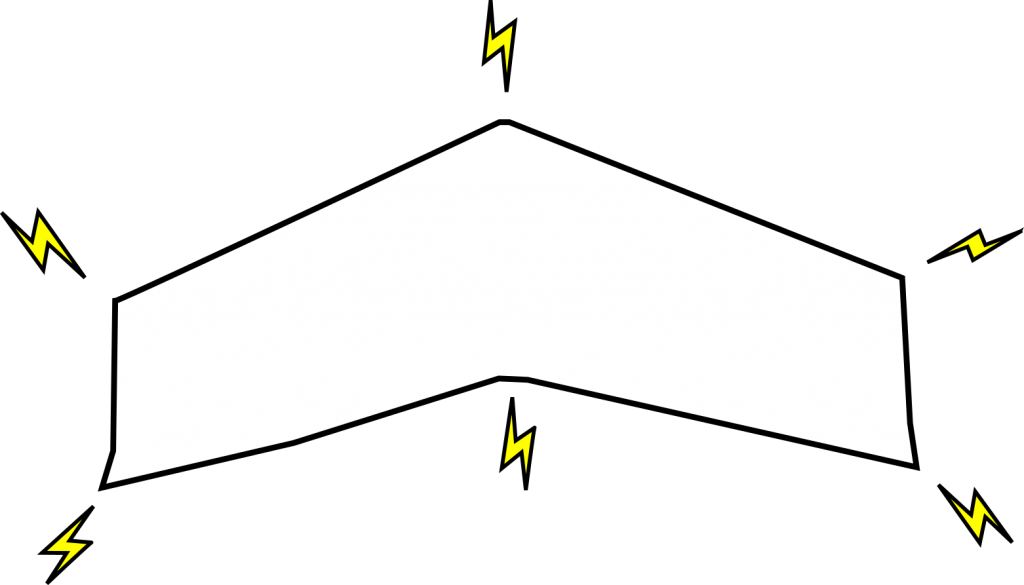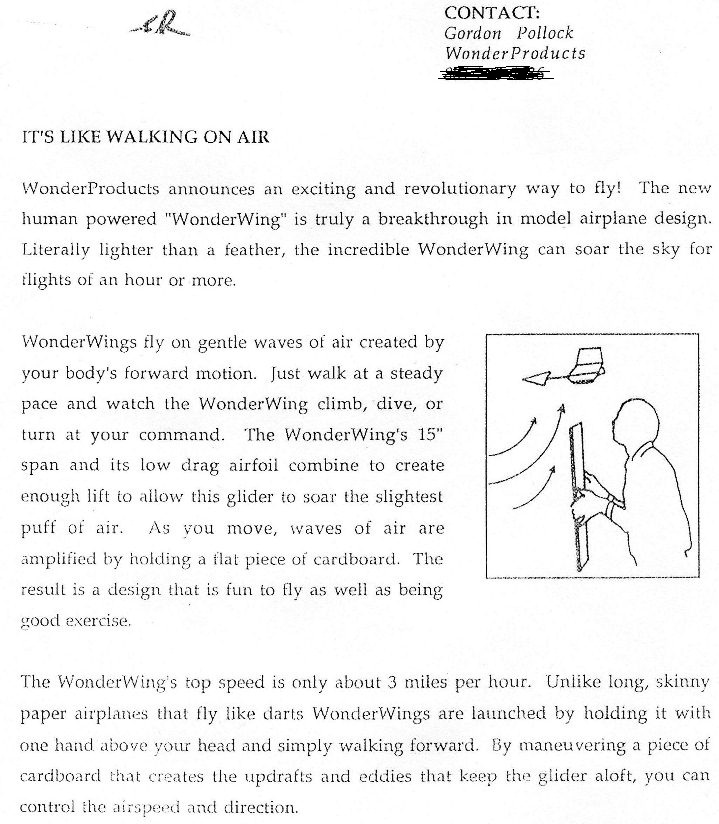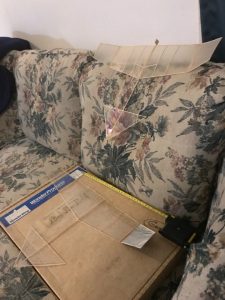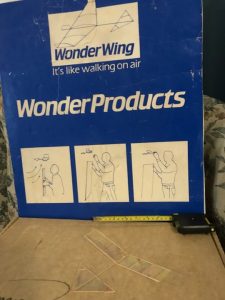Here is a video that Noel sent of the Portola Valley Community Center “Flight Night”. He said, “These two girls were flying the walk-alongs minutes after making them with no instruction or guidance other than their observation of others flying them. ” Notice the dog observing the fun!
When I first started making thin foam walkalong gliders, I had to tape on a pattern—which took too much time. For years I developed various folding jigs and they worked; but the jigs were hard to make, involved complicated taped hinges and the foam had to be repositioned several times. Noel Eberhardt, a retired engineer in California, took the quest to the finish line! His folder design is elegant, effective and so easy to make and use. It’s a game-changer for people making walkalong gliders with groups.
Apart from this accomplishment, Noel Eberhardt is a case study of Pasteur’s observation of how fortune favors the prepared mind. His life is rich with eclectic experiences and inventions, some of which I’ve written about below, after we look at his procedure.
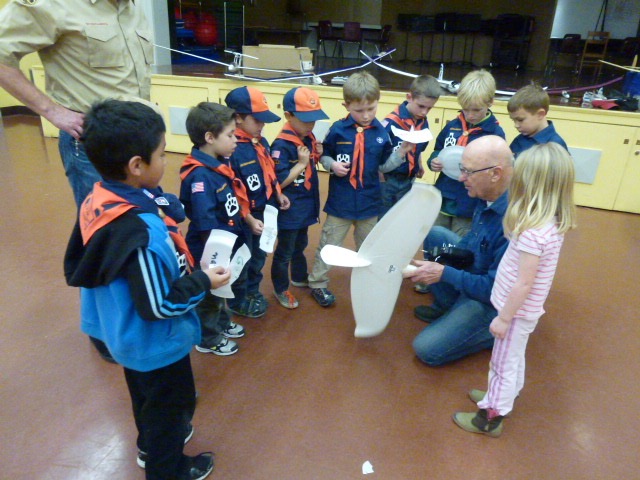
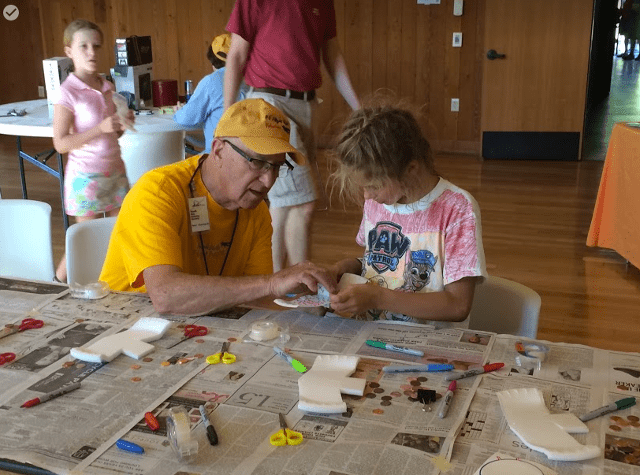
THE FOLDING JIGS OLD AND NEW
Here are some screen shots from a video about the old folding jigs that I developed. They worked, but were difficult to make. You can see the early folding jigs in this video.
Here are a few pictures of Noel’s new procedure. Gallery of full set are below.
